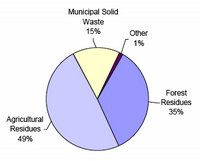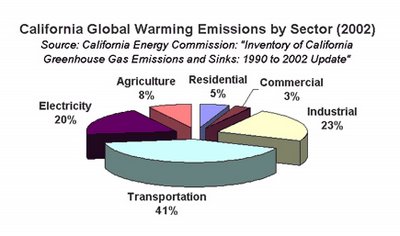May 2006 Digest
As May closed this year, construction of the 100th American ethanol refinery was completed with many more on the way. But how soon will the next generation of refineries use cellulosic biomass as their primary feedstock in place of corn kernels or sugar cane? Proliferating stories about wood, bagasse, switchgrass, and citrus offered a cornucopia of feedstock options - each appropriate to different regions of the world.
May also saw the hyping of alternative fuels in mainstream media. 60 Minutes, Dateline, and Larry King Live all carried stories on ethanol citing the advantages of cellulosic feedstock over corn. Al Gore's An Inconvenient Truth about global warming and greenhouse gases also hit select theaters in New York and Los Angeles to enthusiastic openings.
Here is a Digest of articles posted on the BioConversion Blog during the month of May, 2006.
------------------------
General Topics--------------
• BRI Energy - Converting Blended Feedstock into Ethanol
• IRS Publishes Tax Credit for E85 Pumps
• Debunking Switchgrass "Rural Legends"
• Renewable Electricity Standards Compared by State
• NY Times: "Miles per Cob" - Redefining CAFE Standards
• World Bank Uses Brazil as Funding Benchmark
• Professor Kammen - The Future of Cellulosic Ethanol
• Renewable Energy Programs & Tariffs - Regulator's Handbook
• Biofuels: Think Outside the Barrel
• Creating a Decentralized Energy Network
• Converting Landfills to Energy - Landfill Gas
• Microbiologists Engineer Bacteria to Produce Ethanol
Vehicle Technology---------------
• CALIFORNIA: Greenhouse Gas Legislation for Vehicles
• PHEVs storm Capitol Hill
Mass Media Reviews--------------
• CBS 60 Minutes: The Ethanol Solution
• MSNBC Dateline: Vinod Khosla on Cellulosic Ethanol
• CNN Larry King Live: "Kick the Oil Habit"
• MOVIE: Al Gore's "An Inconvenient Truth"
Around the Nation--------------
• Renewable Electricity Standards Compared by State
California
• CALIFORNIA: CEC Addresses Clean Cities Congress
• CALIFORNIA: Greenhouse Gas Legislation for Vehicles
• Californians for Clean Energy Campaign
Florida
• FLORIDA: Citrus as Feedstock - a Farm-to-Fuel Update
• FLORIDA: Commission Issues Mandate Supporting Renewable Generating Facilities
Louisiana
• LOUISIANA: Cellulosic Feedstock Conversion Deployments
Oregon
• OREGON: Cellulose Inventory Report
New York
• NEW YORK: Bio-Fuels Production Tax Credit
Iowa
• IOWA: Governor Signs E85 Bill
Around the World--------------
• CHINA: The Food vs. Energy Feedstock Conundrum
• FRANCE: Converting Woody Biomass into Ethanol
• World Bank Uses Brazil as Funding Benchmark
Venture capitalist Vinod Khosla made a splash with an exclusive interview on Dateline, a keynote address at MIT, and a co-authored article in the NY Times. Expect to hear more from him as the Californians for Clean Energy Campaign initiative heats up this summer.
technorati digest, biofuels, conversion, bioenergy, cellulosic, feedstock, ethanol


























